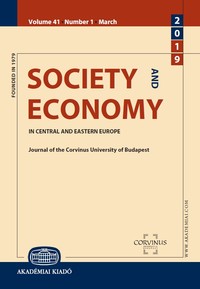Key features of intra-EU labour mobility and its impact from a sending country perspective: Addressing the consequences in Hungary
Key features of intra-EU labour mobility and its impact from a sending country perspective: Addressing the consequences in Hungary
Author(s): Klára Fóti, Tibor TakácsSubject(s): Supranational / Global Economy, Socio-Economic Research
Published by: Akadémiai Kiadó
Keywords: labour mobility; labour markets; labour loss; labour gain
Summary/Abstract: The main characteristics of intra-EU labour mobility are well documented. There is less focus, however, on the pattern of mobility of the East European (EU-13) EU-mobile citizens. This group constitutes more than half (57%) of all the EU movers and show, to some extent, other features than the rest of the EU mobile citizens (EU-15). The first part of this paper gives a brief overview of some key demographic and labour market characteristics of the East European mobile citizens in the most important destination countries. The perspectives of the sending countries are not analysed frequently enough, and thus the second part of the paper focuses on this issue in the case of Hungary, by asking to what extent the serious labour shortages, ensuing from the outflow of Hungarians, could be compensated by the recent increase of immigration of third country nationals. Using OECD data, the paper quantifies the balance of labour gains and losses for Hungary and compares this with Czechia, Poland, and Slovakia. The analysis concludes that despite the substantial recent inflow of third country nationals into Hungary, it remains to be seen whether this has a real substitution effect for the lost domestic labour force.
Journal: Society and Economy. In Central and Eastern Europe ǀ Journal of the Corvinus University of Budapest
- Issue Year: 42/2020
- Issue No: 2
- Page Range: 208-228
- Page Count: 21
- Language: English

